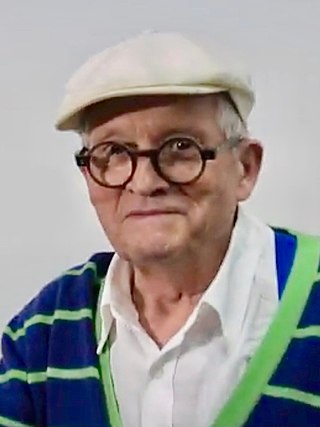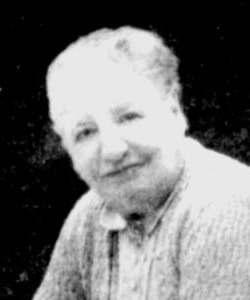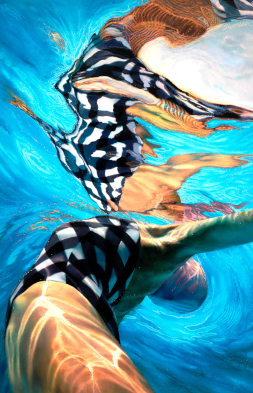
The Metropolitan Museum of Art, colloquially referred to as the Met, is an encyclopedic art museum in New York City. By floor area, it is the fourth-largest museum in the world and the largest art museum in the Americas. With 5.36 million visitors in 2023, it is the most-visited museum in the United States and the fourth-most visited art museum in the world.

Sir Peter Thomas Blake is an English pop artist. He co-created the sleeve design for the Beatles' 1967 album Sgt. Pepper's Lonely Hearts Club Band. His other works include the covers for two of The Who's albums, the cover of the Band Aid single "Do They Know It's Christmas?", and the Live Aid concert poster. Blake also designed the 2012 Brit Award statuette.

David Hockney is an English painter, draughtsman, printmaker, stage designer, and photographer. As an important contributor to the pop art movement of the 1960s, he is considered one of the most influential British artists of the 20th and 21st centuries.

Richard Diebenkorn was an American painter and printmaker. His early work is associated with abstract expressionism and the Bay Area Figurative Movement of the 1950s and 1960s. In the late 1960s he began his extensive series of geometric, lyrical abstract paintings. Known as the Ocean Park paintings, these paintings were instrumental to his achievement of worldwide acclaim. Art critic Michael Kimmelman described Diebenkorn as "one of the premier American painters of the postwar era, whose deeply lyrical abstractions evoked the shimmering light and wide-open spaces of California, where he spent virtually his entire life."
Italo Scanga, an Italian-born American visual artist and educator. He was known for his sculptures, ceramics, glass, prints, and, paintings, working as a neo-Dadaist, neo-Expressionist, and neo-Cubist; his art was mostly created from found objects and/or ordinary objects. Scanga taught for many years at the University of California, San Diego.
Carol Anthony is an American artist known for her sculptures and paintings. In the 1970s, she became famous for her cartoon-like figure, papier-mache sculptures. After 1978, her work became focused on paintings of still life and landscape genres. She is based in New Mexico.

The Museum of Art, Rhode Island School of Design is an art museum integrated with the Rhode Island School of Design, in Providence, Rhode Island, US. The museum was co-founded with the school in 1877. It is the 20th-largest art museum in the United States, and has seven curatorial departments.

Paul Feeley was an artist and director of the Art Department at Bennington College during the 1950s and early 1960s.
Papo Colo is a Puerto Rican performance artist, painter, writer, and curator. He was born in San Juan, Puerto Rico. He lives and works in New York City and in El Yunque rainforest in Puerto Rico. Papo Colo is an interdisciplinary artist, whose work ranges from performance, theater and installation art to painting, writing, and graphic design.

Jessie Franklin Turner was an American fashion designer based in New York in the early 20th century. She was notable for being one of the first American designers to create unique designs, rather than imitating or copying Paris fashions, and was the first American fashion designer to establish a long-term couture business in New York.

Jack Wolfe was a 20th-century American painter most known for his abstract art, portraiture, and political paintings.
Jungil Hong, also known as Jung-li Hong, is a Korean-American artist based in Providence, Rhode Island. She is best known for her psychedelic, cartoon-inspired silkscreen poster art and paintings. More recently she has expanded into textiles.

Nassos Daphnis was a Greek-born American abstract painter, sculptor and tree peony breeder.

Joseph Brummer was a Hungarian-born art dealer and collector who exhibited both antique artifacts from different cultures, early European art, and the works of modern painters and sculptors in his galleries in Paris and New York. In 1906 he and his two brothers opened their first gallery in Paris, the Brummer Gallery. At the start of World War I, they closed the gallery and moved to New York City. Joseph alone opened his next gallery in 1921 in Manhattan.
Andrew Stein Raftery is an American artist and educator, known for his paintings, burin engravings, and drawings on fictional and autobiographical narratives of contemporary American life.
Craig Stockwell is a visual artist who paints large, colorful, abstract paintings. He served (2013-20) as the Director of the MFA in Visual Arts program at the New Hampshire Institute of Art.
Vincent Valdez is an American artist born in San Antonio, Texas, who focuses on painting, drawing, and printmaking. His artwork often emphasizes themes of social justice, memory, and ignored or under-examined historical narratives. Valdez completed his B.F.A. at the Rhode Island School of Design in 2000. He lives and works in Houston, Texas, and is represented by the David Shelton Gallery (Houston) and Matthew Brown Gallery. Valdez's work has been exhibited at Museum of Fine Arts, Houston, Ford Foundation, Los Angeles County Museum of Art, National Portrait Gallery, Blanton Museum of Art, Parsons School of Design, and the Fundacion Osde Buenos Aires.
Matthew Leifheit is an American photographer, writer, magazine-editor, publisher, and professor. He is based in Brooklyn, New York.

Lorraine Shemesh is an American artist whose practice focuses on painting, drawing, and ceramics. Since the early 1990s, she has created investigations of the human form that balance contemporary realism with an abstract expressionist concern for gesture, rhythm and pattern. Her best-known series depict active swimmers in pools viewed from above and underwater or intertwined, costumed dancers set in ambiguous, compressed spaces. In the 2000s, her work has increasingly moved towards abstraction, with figures dissolving into faithfully rendered optical phenomena or geometric patterning. Describing these qualities, Art in America critic Jonathan Goodman wrote, "being true to nature enables Shemesh to record a dazzling array of painterly gestures, some of them squarely within the tradition of Abstract Expressionism ... Her use of abstract effects in the service of representation is striking and makes her art complex."












